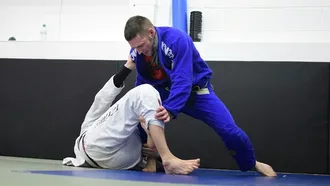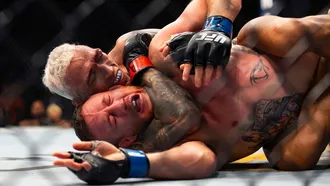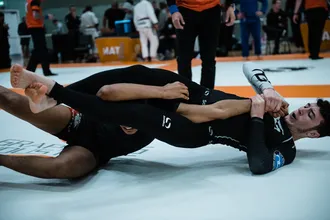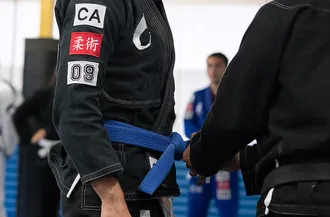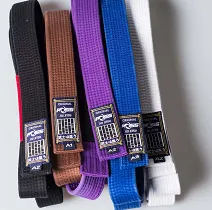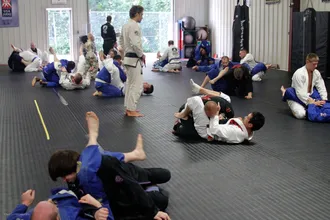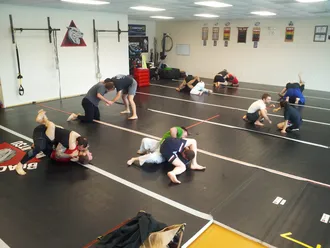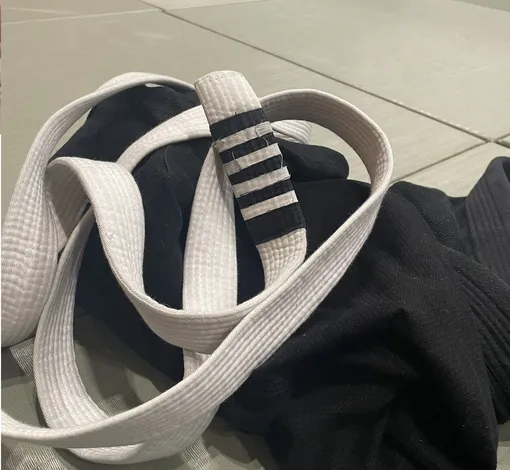
Ever noticed practitioners of Brazilian Jiu-Jitsu (BJJ) with stripes on their belts? These stripes aren’t just for decoration—they represent a student’s progress, dedication, and experience at their current belt level.
But what do BJJ stripes really mean? How are they awarded, and what significance do they hold, especially at the black belt?
In this guide, we’ll break down everything you need to know about BJJ stripes—from how they work at lower belts to their role in the prestigious belt ranking system.
The Basics of BJJ Stripes
Brazilian Jiu-Jitsu (BJJ) is unique among martial arts for its deep emphasis on grappling, submissions, and positional control. Like many martial arts, belt ranks mark a practitioner’s progress, but BJJ also includes an intermediary ranking system: stripes.
BJJ stripes are small, horizontal bars—usually made of tape—placed on the end of a belt. They serve as progress indicators, helping students track their development before earning their next belt promotion.
While belts represent major milestones, stripes provide a structured way to acknowledge technical improvement, dedication, and time spent on the mats within each belt level.
How Many Stripes Do You Need for a Belt Promotion in BJJ?
In Brazilian Jiu-Jitsu (BJJ), stripes serve as progress indicators within each belt level, showing a student's development in technique, strategy, and experience. Each belt from white to brown can have up to four stripes before promotion to the next rank.
However, stripes are not always awarded in a strict order. A student might spend a long time without receiving any and then earn multiple at once. Likewise, some might progress steadily, earning one stripe at a time. The rate of stripe promotions depends on factors like training consistency, technical improvement, competition performance, and the instructor's promotion criteria.
In some cases, a practitioner may even skip stripes entirely and be promoted directly to the next belt if their coach believes they have reached the necessary skill level.
Overall, the more stripes a student has on their belt, the more experience they possess at that rank. However, stripes are simply markers of progress—the real goal in BJJ is continuous learning and development.
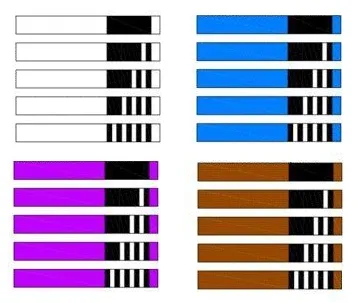
How Are BJJ Stripes Earned?
In Brazilian Jiu-Jitsu (BJJ), stripes are awarded to recognize a student's growth, dedication, and skill refinement at their current belt level. While there is no universal system for earning stripes, most academies consider a combination of the following factors:
- ⚡ Technical Proficiency: Coaches assess how well you execute techniques, control positions, and apply submissions. A deeper understanding and improvement in execution often lead to a stripe.
- 📅 Training Consistency: Regular attendance and active participation in both drills and live sparring show dedication and progress, making consistency a key factor.
- 🥇 Sparring & Competition Performance: Real-world application of techniques against resisting opponents—whether in class sparring or competition—can accelerate promotions.
- 🤝 Mindset & Attitude: Respect for teammates, instructors, and the art of BJJ plays a role. A positive attitude, humility, and willingness to help others can contribute to your progression.
- ⏳ Time & Experience: While BJJ progression isn't strictly time-based, spending sufficient time at each level allows for growth, adaptation, and refinement of skills before moving forward.
Ultimately, stripe promotions are instructor-dependent and vary between academies. Some schools follow structured evaluation periods, while others promote students based on individual progress and performance. Focus on improving, staying consistent, and enjoying the journey—your stripes will come in time!
BJJ Stripe Progression Timeline
In Brazilian Jiu-Jitsu (BJJ), stripes serve as progress markers within each belt level, helping practitioners track their development before moving to the next rank.
While promotions depend on training consistency, skill improvement, and instructor discretion, the following timeline provides a general estimate of how long it may take to earn each stripe.
| 🥋 Belt | 📏 Max Stripes | ⏳ Time per Stripe (Avg.) | 🔼 Promotion Timeline |
|---|---|---|---|
| ⚪ White Belt | 4 | 3-6 months | 1-2 years to Blue Belt |
| 🔵 Blue Belt | 4 | 6-12 months | 2-3 years to Purple Belt |
| 🟣 Purple Belt | 4 | 12-18 months | 1.5-3 years to Brown Belt |
| 🟤 Brown Belt | 4 | 12-24 months | 1-2 years to Black Belt |
| ⚫ Black Belt | 6 (before Coral Belt) | 1st to 3rd Degree: 3 years each 4th to 6th Degree: 5 years each |
10+ years at Black Belt |
Note: Stripe promotions are not guaranteed on a fixed timeline. Some students may earn stripes faster due to exceptional progress, while others may spend longer at a given rank.
Stripes are a visual milestone that help track progress, but the true goal in BJJ is developing skill, understanding techniques, and growing as a martial artist.
💡 Tip: Focus on refining your technique and staying consistent—your stripes will come naturally!
When Can You Expect to Get Stripes in BJJ?
Unlike belt promotions, BJJ stripes don’t follow a fixed timeline. They are awarded based on your technical progress, consistency, and overall development, rather than a set number of classes or training hours.
Most academies distribute stripes during promotion ceremonies or regular classes, with instructors evaluating:
- Skill Improvement: Execution of techniques, escapes, and submissions.
- Mat Time & Consistency: Regular training and applying techniques effectively.
- Performance in Sparring: Progress during live rolling sessions.
- Coach’s Discretion: Some gyms promote based on competition, others on attendance and attitude.
The Stripe Journey to Black Belt
After reaching black belt, progression continues through degrees, symbolizing experience, contribution, and leadership in the BJJ community.
Stripes on a BJJ Black Belt (Degrees)
While stripes on colored belts indicate progress toward the next belt, black belt stripes (degrees) represent years of dedication and contributions to the art:
- 🥋 1st to 3rd Degree: Earned every three years.
- ⏳ 4th to 6th Degree: Earned every five years.
- 🎖️ 7th and 8th Degree: Earned after seven years. Practitioners at this stage wear a coral belt (red & black).
- 🔴 9th and 10th Degree: The highest ranks, reserved for founding figures in BJJ who have made historical contributions. Practitioners at these levels wear a red belt.
These time-based promotions recognize not only skill but also an instructor’s impact on the BJJ community through teaching, mentorship, and innovation.
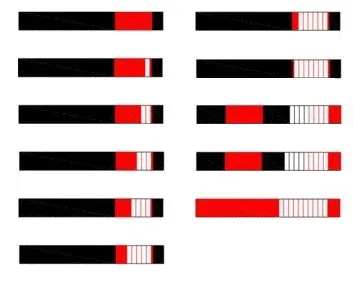
Frequently Asked Questions About BJJ Belt Stripes
How Long Does It Take to Get Your First Stripe in BJJ?
Most students earn their first stripe within 3 to 6 months of consistent training, but it depends on attendance, skill improvement, and instructor discretion.
Can You Skip Stripes in BJJ?
Yes, some students may be promoted to the next belt without earning all four stripes, depending on their progress and the academy’s ranking system.
How Do You Wash a BJJ Belt with Stripes?
To prevent stripes from peeling off, wash your BJJ belt in cold water and let it air dry. Avoid too hot of water or the dryer, as heat can weaken the adhesive on the stripes.
How Are Stripes Put on a BJJ Belt?
Stripes in BJJ are typically strips of athletic tape placed near the end of the belt. They are added by an instructor during a promotion ceremony.
Conclusion: Stripes Mark Your BJJ Journey
Stripes in Brazilian Jiu-Jitsu are more than just tape on a belt—they represent dedication, progress, and personal growth.
Every stripe you earn is a milestone, reflecting your commitment to learning, perseverance in training, and improvement on the mats. At the black belt level, these stripes (degrees) stand as a testament to decades of contribution and mastery.
Whether you're just beginning your BJJ journey or working toward your next promotion, remember: each stripe and belt is a chapter in your unique martial arts story.
Stay consistent, keep rolling, and enjoy the process. Your journey is what truly matters. 🥋
